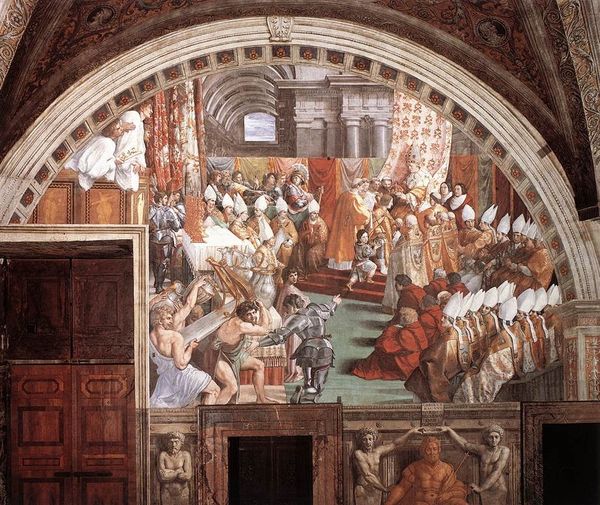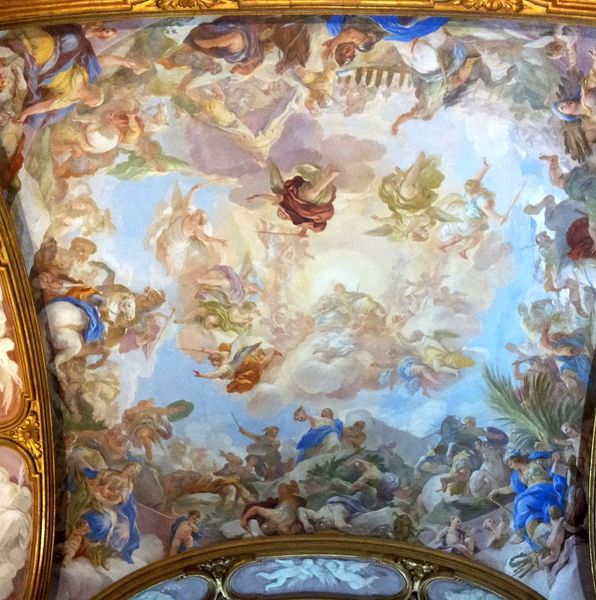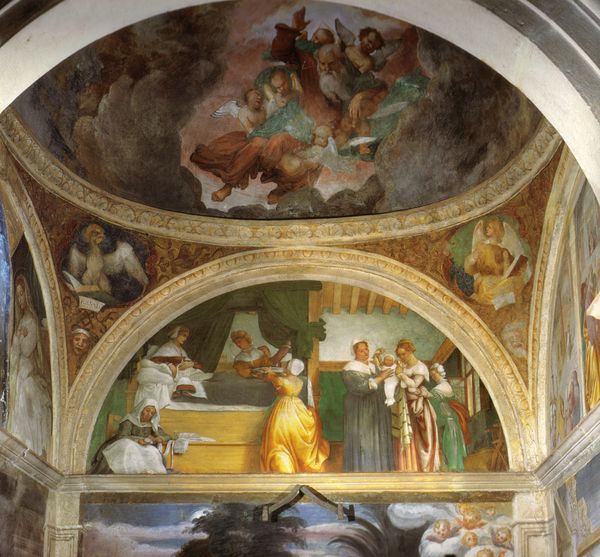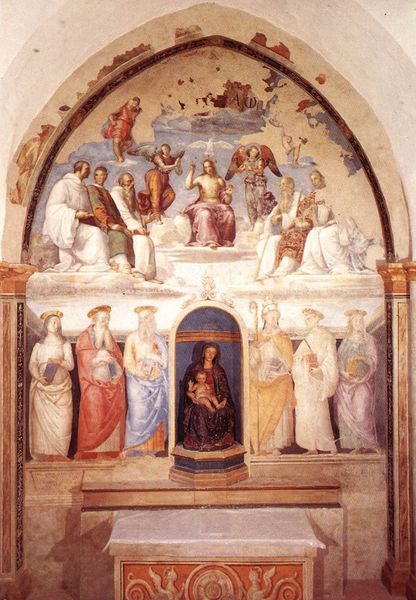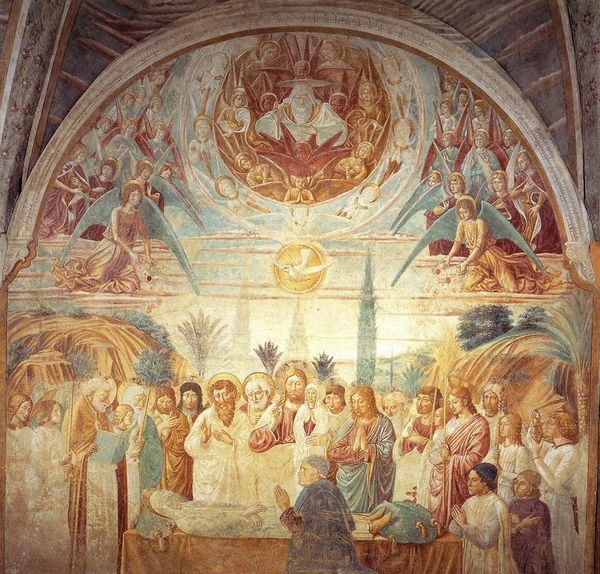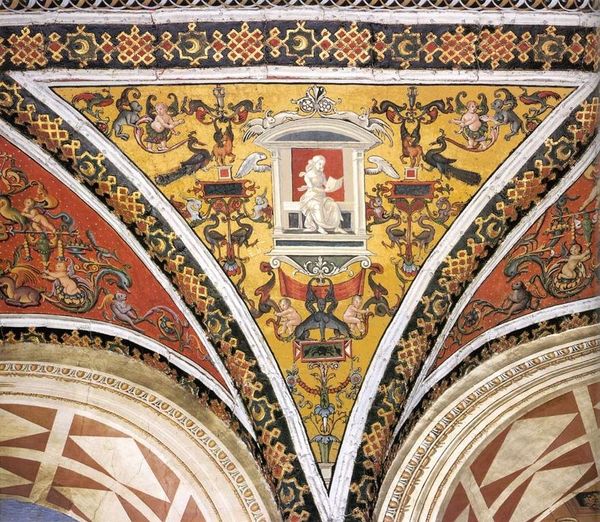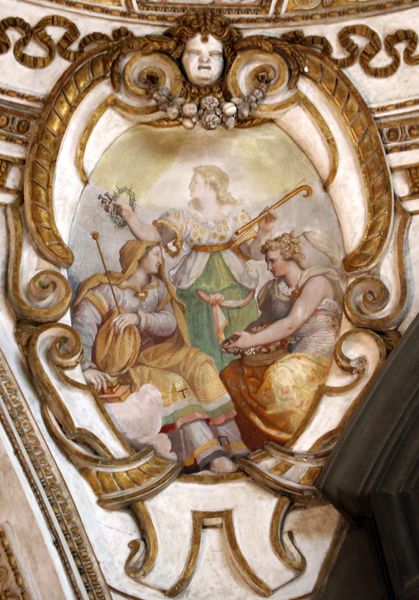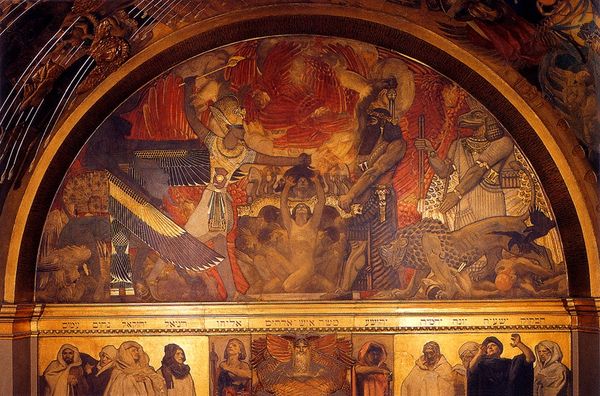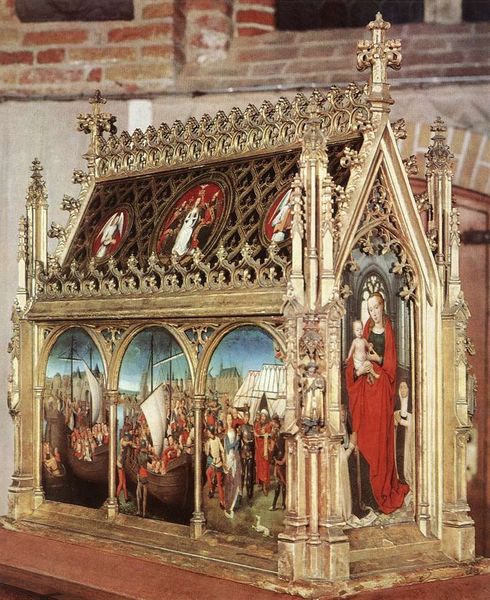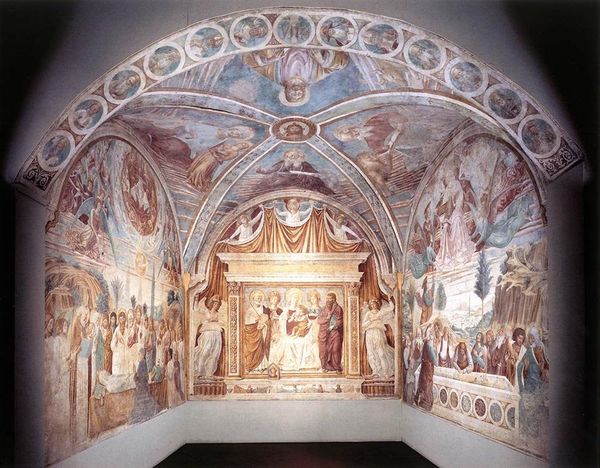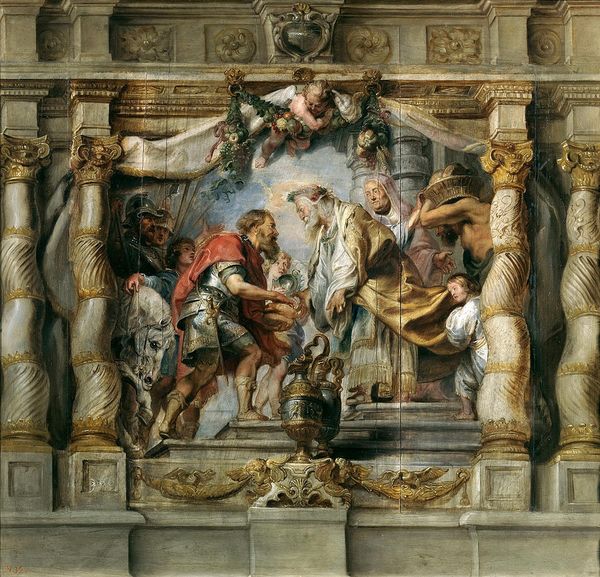
painting, fresco
#
narrative-art
#
baroque
#
painting
#
fresco
#
history-painting
Dimensions: 500 x 400 cm
Copyright: Public domain
Curator: Just look at that golden explosion! So much ornamental excess. This is "The Investiture of Herold as Duke of Franconia," a fresco by Giovanni Battista Tiepolo, completed in 1751. Editor: Absolutely, it’s pure theatre, isn’t it? The drama! My eye is drawn immediately to that almost ridiculously theatrical curtain draped above the central scene, framing the action as if on a grand stage. The colours alone radiate power and status. Curator: Theatre indeed. Tiepolo was, after all, decorating the Kaisersaal, or Imperial Hall, in the Würzburg Residence. These spaces were explicitly designed to communicate power and legitimise authority through visual spectacle. Consider the message sent by commissioning a painting depicting an historical figure being invested with the title of Duke. It speaks to the deep cultural investment in validating aristocratic lineages, a narrative architecture deeply ingrained in European society at the time. Editor: And the characters! I am immediately struck by the presence of the dog. Dogs in art can indicate fidelity and loyalty, so is it to suggest Herold will remain faithful in his role as Duke? Or does the dog signify, more broadly, a loyalty expected of the subjects in relation to this leader? The symbols used here surely had meaning to contemporary audiences. Curator: Precisely. It reminds us that art doesn’t simply reflect the values of its time but actively helps to construct and promote them. This specific piece was actually made during a tumultuous period of political instability and a rising merchant class who challenged established norms and monarchical traditions. The message, the artist choice and commissioning was to reinforce loyalty towards historical governance structures. Editor: Given the way the subjects of the fresco gaze reverentially at the central figures, yes, I think the message is very clearly communicated. All the trappings are there to instill respect. Curator: Absolutely. What appears as pure aesthetic flourish, is in fact embedded with political intention. The lavish application is never solely decorative in these spaces. Editor: In other words, reading artworks such as Tiepolo’s fresco through an understanding of imagery adds another fascinating layer to how we receive these art pieces. They speak to us across the centuries.
Comments
No comments
Be the first to comment and join the conversation on the ultimate creative platform.

